There’s an array of reasons you might consider living in a container home with a nice container bedroom. Container homes have gained popularity for their unique and sustainable approach to housing. These efficiently designed structures offer numerous benefits, including affordability, mobility, and eco-friendliness.
However, amidst the excitement of building a container home, the bedroom often holds a special significance. The importance of designing a well-functioning and inviting container home bedroom cannot be overstated.
In this comprehensive guide, we will explore the key aspects and considerations for designing a container home bedroom that goes beyond the ordinary.
From maximizing the limited space and optimizing storage solutions to ensuring a cozy and relaxing atmosphere, we have gathered expert advice and inspiration to help you transform your container home bedroom into a retreat you’ll love coming back to.
Whether you are intrigued by the idea of container homes or already own one and seek to enhance your bedroom space, this content will provide valuable insights and practical tips to make the most of your container home bedroom. Let’s dive in!
Table of Contents
Understanding Container Homes
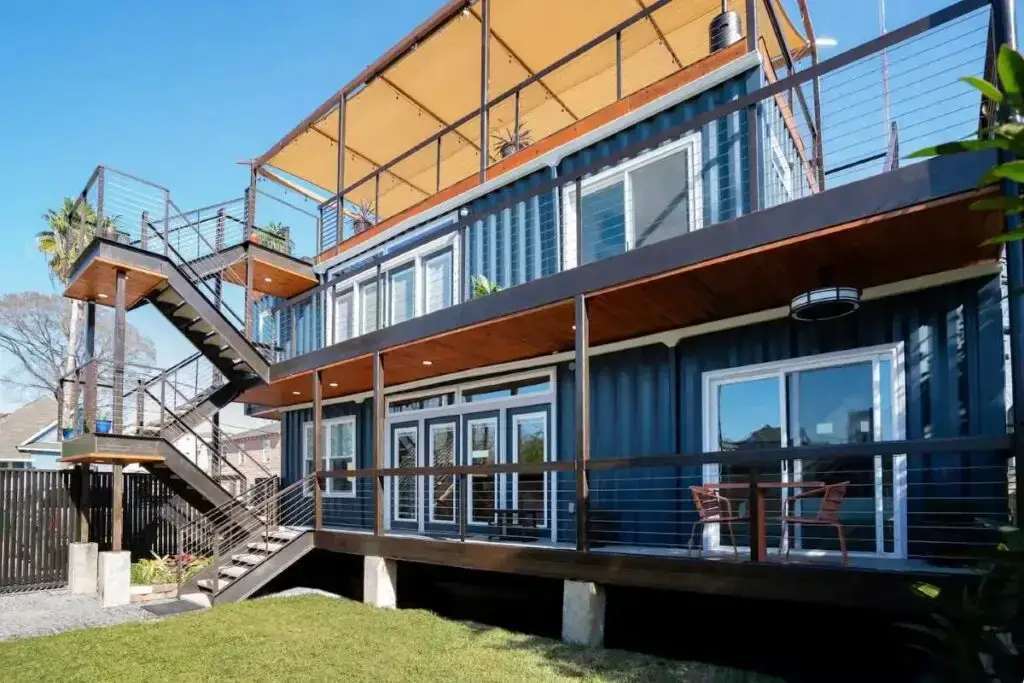
A. Definition and Features of Container Homes
Container homes, also known as shipping container homes, are residential structures made from repurposed shipping containers. These containers are typically made of steel and come in various sizes. The most common sizes used for container homes are 20 feet and 40 feet long.
Container homes have gained popularity in recent years due to their affordability, sustainability, and unique aesthetic appeal.
These homes are known for their industrial and minimalist design, making them a popular choice among those seeking a modern and unconventional living space.
Read More on 1 Bedroom Shipping Container Home Floor Plans – Great Photos
B. Advantages and Disadvantages of Using Shipping Containers for Living Spaces
Advantages:
- Affordability: Building a container home is often more cost-effective than constructing a traditional house.
- Eco-friendly: By repurposing shipping containers, container homes contribute to reducing construction waste and promoting sustainability.
- Durability: Shipping containers are designed to withstand harsh conditions, making them highly durable and resistant to extreme weather.
- Modularity: Container homes offer flexibility in terms of design and can easily be expanded or modified by adding more containers.
Disadvantages:
- Space limitations: The compact size of shipping containers may pose challenges in terms of space planning and layout design.
- Insulation: Proper insulation is crucial to regulate the temperature inside container homes, as steel containers can become hot or cold depending on the climate.
- Building regulations: Depending on the location, container homes may be subject to certain building regulations and restrictions.
- Modification requirements: Transforming a shipping container into a livable space often requires cutting windows, doors, and adding insulation, which can be time-consuming and require skilled labor.
C. Key Considerations When Designing a Container Home Bedroom
When it comes to designing a container home bedroom, there are several important factors to consider:
- Layout: Plan the layout of the bedroom carefully to optimize space and create a functional and comfortable environment.
- Insulation: Ensure proper insulation to regulate temperature and create a cozy atmosphere inside the bedroom.
- Lighting: Plan for adequate natural and artificial lighting to enhance the ambience of the bedroom.
- Storage: Incorporate smart storage solutions to maximize space utilization and keep the bedroom organized.
- Privacy and soundproofing: Consider methods to ensure privacy and minimize noise within the container home bedroom.
| Image | Product Title | Features | Price |
|---|---|---|---|
 | Buy on Amazon | ||
 | Buy on Amazon | ||
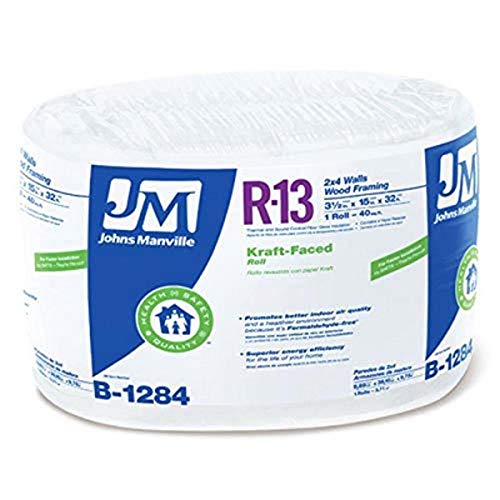 | Buy on Amazon |
Read More on Why Container Shortage Compromise Global Logistics And Trade
Space Optimization in Container Home Bedrooms
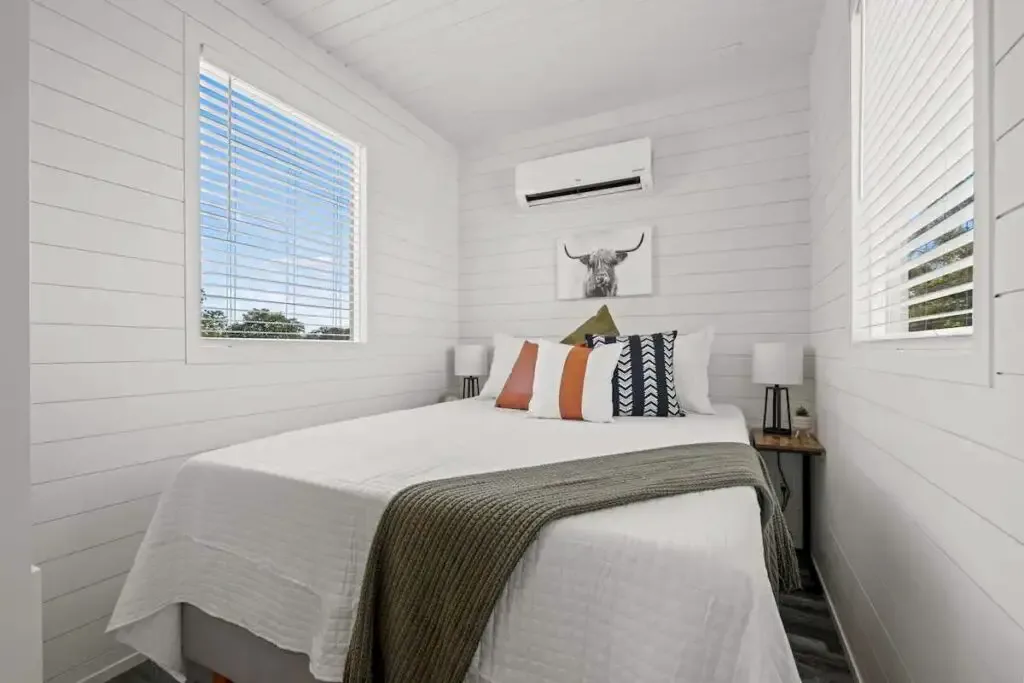
In container home bedrooms, space optimization is key to creating a comfortable and functional living area. With limited square footage, it’s essential to make the most of every inch. Here are some clever strategies to maximize space:
A. Maximizing Vertical Space Through Loft Beds or Bunk Beds
One effective way to optimize space in a container home bedroom is by using loft beds or bunk beds. These beds elevate the sleeping area, freeing up valuable floor space below. This space can be utilized for various purposes, such as creating a mini office or storage area.
B. Utilizing Under-bed Storage Solutions
Another smart space-saving idea is to utilize under-bed storage solutions. Consider investing in bed frames with built-in storage drawers or utilize under-bed storage containers. This allows you to store off-season clothing, extra bedding, or other items that may clutter the room.
C. Incorporating Built-in Shelving and Wall-mounted Organizers
Built-in shelving units and wall-mounted organizers are fantastic space-saving solutions for container home bedrooms.
These can be installed on unused walls or above the bed, providing convenient storage for books, decor, and personal items. By using vertical wall space, you can keep the room tidy and functional.
Read More on Best Poolside Container Plants – Stunning Pool Area Choices
D. Tips for Decluttering and Minimalist Living in Small Spaces
In container home bedrooms, it’s essential to embrace a minimalist mindset and declutter regularly. Consider adopting a capsule wardrobe to reduce clothing clutter.
Opt for multifunctional furniture pieces and avoid unnecessary decorations. By keeping your space clutter-free, you’ll create a visually appealing and spacious container home bedroom.
Container Home Bedroom Design
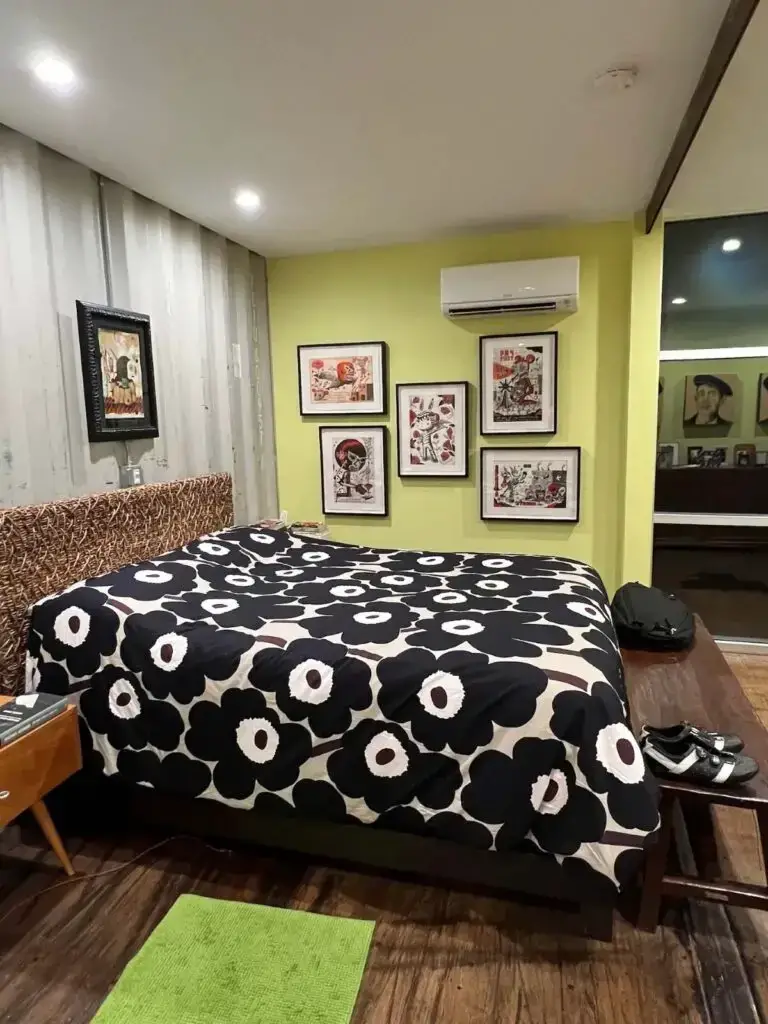
A. Factors to Consider When Designing a Container Home Bedroom Layout
Designing a container home bedroom requires careful consideration of the available space. Due to the limited dimensions of a container, it is important to optimize the layout for functionality and comfort. Factors to consider include:
- Bed placement: Choose the ideal location for the bed to maximize space and flow within the bedroom.
- Storage solutions: Incorporate built-in storage options to maximize space efficiency and keep the bedroom organized.
- Furniture arrangement: Determine the placement of additional furniture pieces, such as dressers or nightstands, to ensure they fit harmoniously within the bedroom layout.
B. Importance of Natural Light and Ventilation in Container Home Bedrooms
Natural light and proper ventilation play a crucial role in container home bedrooms. These elements not only enhance the overall aesthetics of the space but also contribute to the well-being and comfort of the occupants. Benefits include:
- Health and well-being: Natural light and fresh air can improve sleep quality and promote a healthy living environment.
- Energy efficiency: Maximizing natural light reduces the need for artificial lighting during the day, resulting in energy savings.
- Aesthetics: Natural light can create a spacious and welcoming atmosphere in the container home bedroom.
C. Incorporating Windows and Skylights for Optimal Lighting and Views
Windows and skylights are essential in container home bedrooms to introduce natural light and provide beautiful views of the surroundings. Consider the following:
- Strategic placement: Position windows and skylights to capture the best views and optimize natural light intake.
- Size and type: Choose windows and skylights that are appropriately sized for the bedroom space, considering both aesthetics and functionality.
- Privacy: Explore options for window coverings or privacy solutions that can be easily adjusted to allow for privacy as needed.
Read More on Container Pools in NZ – Unparalleled Backyard Beauty
D. Enhancing the Sense of Space Using Mirrors and Reflective Surfaces
Mirrors and reflective surfaces can be utilized in container home bedrooms to create an illusion of more space. This design technique can make the bedroom appear larger and brighter. Consider the following:
- Mirror placement: Strategically position mirrors to reflect natural light and make the room feel more expansive.
- Reflective accents: Incorporate furniture or decor with reflective surfaces, such as metallic finishes or mirrored accents, to further enhance the sense of space.
- Optical illusions: Experiment with different angles and placements to maximize the visual impact of mirrors and reflective surfaces.
Bed Options for Container Homes
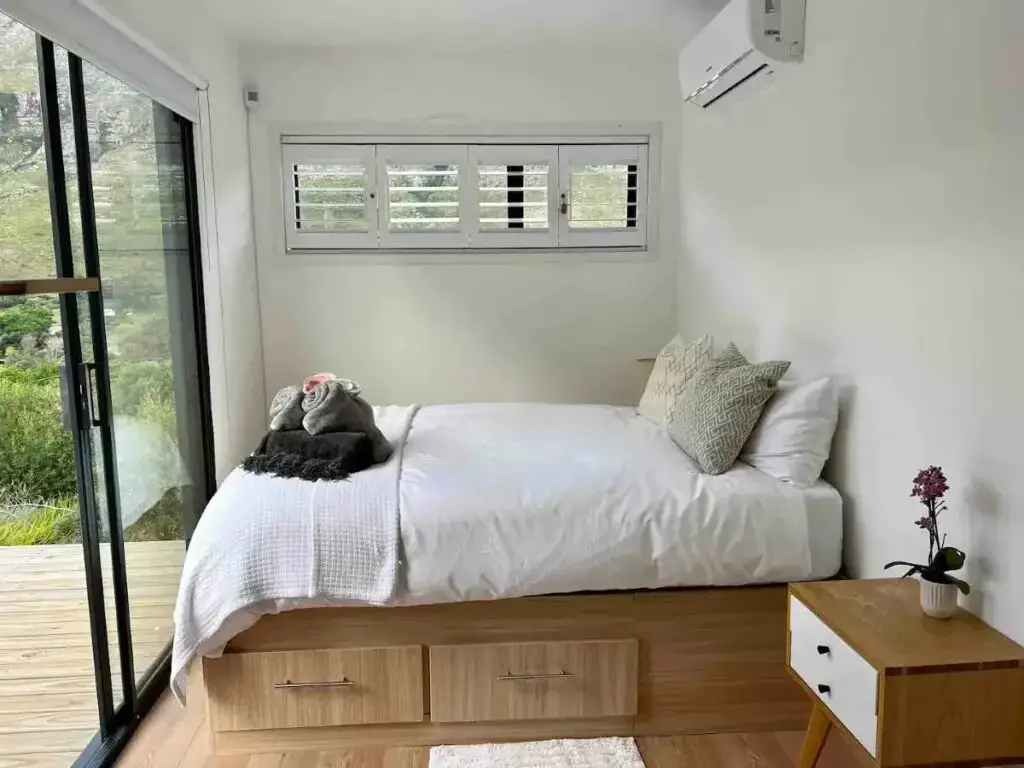
Designing the perfect bedroom for your container home requires careful consideration of the bed options available.
Not only do you need to choose the right size and type of bed for your space, but you also need to think about the multifunctionality of the room and efficient space utilization. Here are some bed options that work best in container home bedrooms:
A. Choosing the Right Bed Size and Type for Container Home Bedrooms
When it comes to selecting a bed for your container home bedroom, size is key. Since space is often limited, opting for a smaller size bed, such as a twin or full, can help create a more open and spacious feel.
Consider choosing a platform bed with built-in storage to maximize your storage options without compromising on style.
B. Foldaway and Convertible Bed Options for Multifunctional Spaces
In a container home, every inch of space counts. To maximize the functionality of your bedroom, consider foldaway or convertible bed options.
These beds can be easily folded up or converted into a different piece of furniture during the day, allowing you to use the room for various purposes, such as a home office or entertainment area.
Read More on Luxury Container Hotels – Offering Unique Experiences
C. Exploring Murphy Beds and Wall Beds for Efficient Space Utilization
Murphy beds and wall beds are excellent choices for container homes with limited square footage. These bed options can be conveniently stored vertically against the wall when not in use, freeing up valuable floor space.
With various designs and styles available, you can find a Murphy bed or wall bed that seamlessly blends with your container home’s aesthetic.
By carefully considering your bed options, you can create a cozy and functional bedroom in your container home without compromising on style or space.
Keep in mind the size and type of bed that best fits your needs, as well as the potential for foldaway or convertible options to make the most of your multifunctional space.
Consider exploring Murphy beds and wall beds for efficient space utilization. With the right bed choice, your container home bedroom will become a haven of comfort and style.
Lighting Design for Container Home Bedrooms
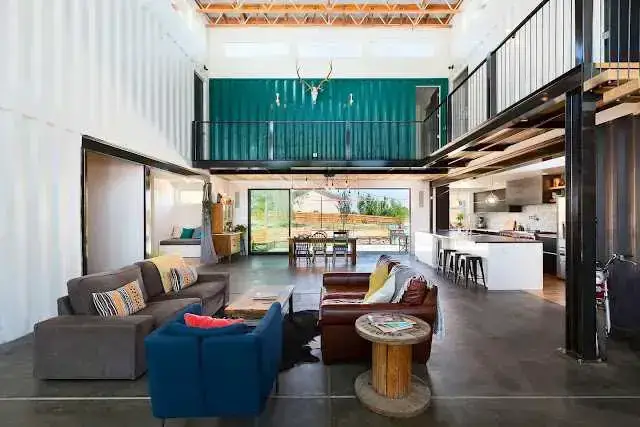
A cozy and functional container home bedroom doesn’t just rely on the right bed and storage solutions, but also on its lighting design. Proper lighting not only sets the mood, but also enhances the overall aesthetics and functionality of the space.
A. Importance of Lighting in Creating a Cozy and Functional Container Home Bedroom
Lighting plays a crucial role in creating a warm and inviting ambiance in a container home bedroom. It affects the overall feel of the space and can either make it feel cozy and relaxing or cold and unwelcoming.
Proper lighting can also make a small space appear larger and more open, enhancing the overall design of the bedroom.
B. Combining Ambient, Task, and Accent Lighting for Various Needs
To achieve the perfect lighting design for your container home bedroom, it is important to combine different types of lighting.
Ambient lighting provides overall illumination to the space, making it comfortable to navigate and perform daily tasks.
Task lighting, on the other hand, focuses on specific areas such as reading corners or dressing areas, providing ample light for activities. Additionally, accent lighting can be used to highlight certain features or artwork, adding depth and interest to the room.
Read More on Experience Luxury Living In Tasmania With Stunning Container Homes
C. Energy-efficient Lighting Options Suitable for Container Homes
When designing the lighting for your container home bedroom, consider energy-efficient options to reduce your environmental footprint and save on electricity bills.
LED light bulbs are a great choice, as they consume less energy and have a longer lifespan compared to traditional incandescent bulbs. Additionally, opt for fixtures and lamps with energy-saving features, such as motion sensors or dimmers, to further enhance efficiency.
D. Incorporating Smart Lighting Systems for Convenience and Control
To add convenience and control to your container home bedroom’s lighting design, consider incorporating smart lighting systems.
These systems allow you to adjust the brightness and color of the lights with a mobile app or voice commands, giving you complete control over the ambiance of your bedroom.
They can also be programmed to automatically turn on or off at specific times, providing added security and energy savings.
By carefully considering the importance of lighting, combining different types of lighting, choosing energy-efficient options, and incorporating smart lighting systems, you can create a bedroom in your container home that is not only visually appealing but also cozy, functional, and energy-efficient.
Read More on Beautiful 5-Bedroom Shipping Container Home: Cost Review
Storage Solutions for Container Home Bedrooms
When it comes to designing a container home bedroom, one of the biggest challenges is finding adequate storage solutions.
With limited space available, it is essential to get creative and make the most of every inch. Here are some effective storage ideas to help you maximize the functionality of your container home bedroom.
A. Customizing Storage Solutions to Fit the Limited Space Available
In a container home bedroom, every square foot matters. Customizing storage solutions allows you to utilize even the smallest nooks and crannies.
Consider installing floating shelves above the bed or next to the windows to store books, decorative items, or even folded clothes. Additionally, you can opt for under bed storage containers or drawers to make use of the often-unused space beneath your bed.
B. Utilizing Multifunctional Furniture With Built-in Storage Compartments
Multifunctional furniture is a game-changer when it comes to optimizing storage in container home bedrooms. Look for beds with built-in drawers or ottomans that can be used for seating and also have hidden storage compartments.
You can also invest in bedside tables with multiple shelves or a dresser that doubles as a vanity with a mirror and ample storage space.
Read More on How Much Space Do You Need For A Container Home?
C. Maximizing Closet and Wardrobe Space With Organizational Tools and Techniques
In a container home bedroom, your closet becomes invaluable for storing clothes, shoes, and accessories. To maximize the available closet space, use organizational tools such as hanging shoe organizers, cascading hangers, and shelf dividers.
Consider installing a clothing rod extender to double the hanging space or use adjustable closet systems that can be customized to fit your needs.
By implementing these storage solutions, you can make your container home bedroom not only functional but also stylish and clutter-free. Embrace the challenge of designing in a limited space and let your creativity soar!
Color Schemes and Decor for Container Home Bedrooms
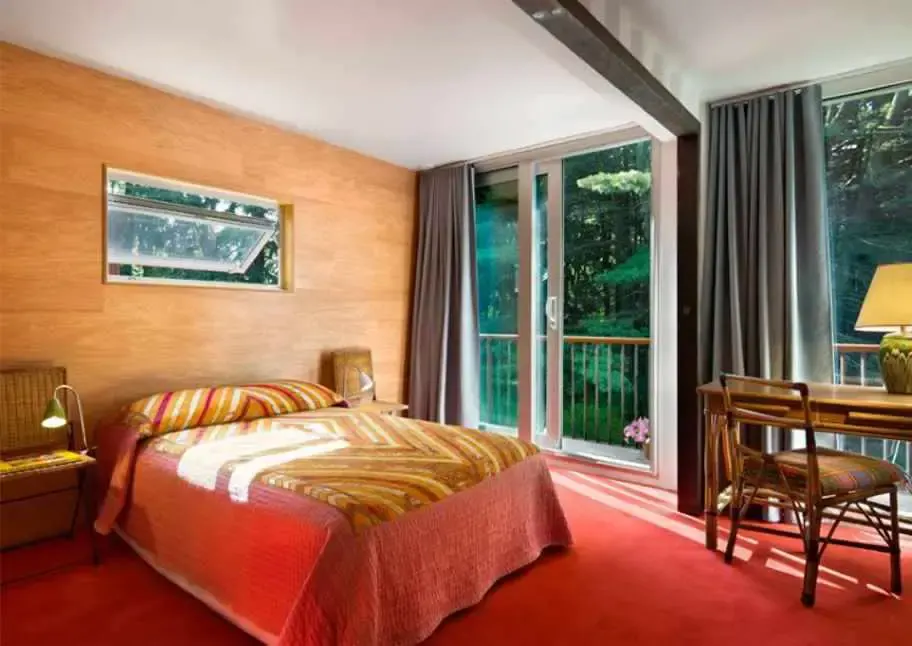
A. Selecting color Palettes That Enhance the Perception of Space and Tranquility
When designing a container home bedroom, the choice of colors is crucial. Opt for light, neutral tones such as whites, creams, and pastels to create a sense of spaciousness. These colors reflect light and make the room appear larger and brighter.
Additionally, soft hues like blues, greens, and lavender can evoke a calming and tranquil atmosphere, perfect for a restful night’s sleep. Consider using these shades in your container home bedroom to promote relaxation and serenity.
B. Tips for Using Accent Colors and Patterns to Add Personality to The Bedroom
While neutral colors are essential for a container home bedroom, incorporating accents can inject personality and vibrancy into the space. Choose one or two bright or bold colors to use as accents throughout the room.
For example, you can add pops of color with pillows, throws, or artwork. Experiment with patterns such as geometric shapes or floral prints to create visual interest and personality within the bedroom.
C. Incorporating Natural Elements and Textures to Create a Warm and Inviting Ambiance
Bringing the outdoors inside can create a warm and inviting ambiance in your container home bedroom. Incorporate natural elements and textures like wood, stone, and organic fabrics.
Consider using reclaimed wood for furniture or installing a stone accent wall. Use bamboo or rattan woven baskets for storage or add potted plants to introduce a touch of nature. These elements will add depth, texture, and a cozy atmosphere to your container home bedroom.
Read More on 2023 Outdoor Solar Garden Lights: Ultimate Costs, Pros & Cons
Furniture Selection for Container Home Bedrooms
When designing a container home bedroom, it is crucial to choose furniture that not only complements the space but also maximizes functionality. Here are some key considerations to keep in mind:
A. Choosing Furniture That Aligns With the Dimensions and Layout of Container Home Bedrooms
Since container home bedrooms typically have limited space, it is essential to select furniture that fits well within the given dimensions.
Consider measuring the available space before purchasing any furniture pieces. Opt for compact options such as beds with built-in storage or platform beds that don’t require additional bulky bed frames.
B. Incorporating Modular and Lightweight Furniture for Easy Mobility and Flexibility
In a container home, the need for mobility and flexibility is paramount. Look for modular furniture pieces that can be easily disassembled and moved around as needed. Additionally, prioritize lightweight materials such as aluminum or composite wood to ensure easy transportation.
C. Space-saving Furniture Options Such as Wall-mounted Desks, Folding Chairs, etc.
To optimize the limited space in container home bedrooms, consider space-saving furniture options. Wall-mounted desks provide a functional workspace while minimizing floor space usage.
Folding chairs or stools can be neatly stored away when not in use. Additionally, choose furniture with built-in storage compartments, such as nightstands with drawers or ottomans with hidden storage.
By carefully selecting furniture that aligns with the dimensions, incorporates modularity and lightweight materials, and offers space-saving features, you can create a container home bedroom that is both stylish and functional.
Read More on 20 Best Interior Design Ideas For Beautiful Shipping Container Homes
Privacy and Soundproofing in Container Home Bedrooms
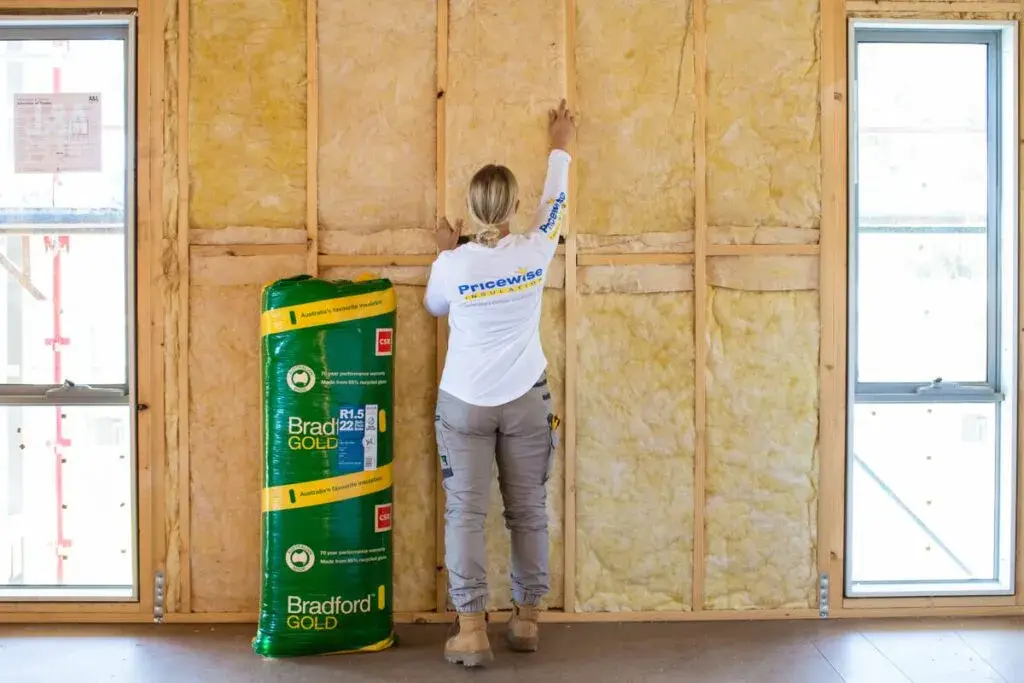
When designing a container home bedroom, privacy and soundproofing are important factors to consider. Although container homes offer a unique living experience, they may require additional measures to ensure a peaceful and private retreat.
A. Enhancing Privacy Through Curtains, Blinds, or Room Dividers
One effective way to create privacy in a container home bedroom is by using curtains, blinds, or room dividers. These versatile options not only offer visual separation but also help in reducing outside noise. Choose curtains or blinds that match your overall bedroom design and provide the desired level of privacy.
A room divider can also be a great addition to your container home bedroom. It serves the dual purpose of dividing the space and creating a private area within the room.
With various styles and materials available, you can find a room divider that complements your bedroom’s aesthetics.
B. Strategies for Reducing Noise Transmission in Container Home Bedrooms
Noise transmission can be a concern in container home bedrooms. To minimize external sounds and create a peaceful environment, consider the following strategies:
- Insulate the walls: Insulating the walls with materials like acoustic panels or soundproofing foam can help block out external noise.
- Weatherstripping: Applying weatherstripping to windows and doors helps seal any gaps, reducing the amount of noise that enters the room.
- Double-glazed windows: Installing double-glazed windows can significantly reduce noise infiltration and enhance the overall insulation of the bedroom.
C. Soundproofing Techniques for Walls and Floors in Container Homes
Soundproofing the walls and floors of your container home bedroom can further enhance privacy and reduce noise. Consider the following techniques:
- Use soundproofing materials: Choose materials like cork or rubber underlayments for the flooring to help absorb sound vibrations and reduce echo.
- Add soundproofing panels: Installing soundproofing panels on the walls can reduce noise transmission and create a quieter environment.
- Seal gaps and cracks: Inspect the walls and floors for any gaps or cracks and seal them properly to prevent sound leakage.
By implementing these privacy and soundproofing techniques, you can transform your container home bedroom into a peaceful and private haven, free from unwanted disturbances.
The Danish Concept of Hygge In A Container Bedroom
Applying the Danish concept of hygge as you think through this framework may be interesting. In short, hygge is a feeling, a state of mind. It’s characterized by feelings like coziness and comfort but wellness, contentment, happiness, and more.
If you pay attention to these factors as you refine your bedroom’s design requirements, it will be well on its way to being a functional and comfortable space.
The result of this analysis should be a clear statement describing what you need your bedroom to provide.
Any activities not included in this list will be accomplished elsewhere. Use this list to guide your choices as you design and outfit your bedroom to best suit your needs.
You can use this initial list to get started thinking about what types of furniture and finishes you might want in your bedroom. We’ll revise the ideas throughout the rest of this article.
Read More on 40 Foot Shipping Container Home Floor Plans
Conclusion
Designing a container home bedroom requires careful consideration of various elements such as space optimization, bed options, lighting design, storage solutions, color schemes, furniture selection, privacy, and soundproofing.
By following the guidelines provided in this content, you can create a well-planned and comfortable container home bedroom.
Key Takeaways:
- Container homes offer a unique and sustainable housing solution.
- Space optimization is crucial in container home bedrooms.
- Choose bed options that maximize functionality and comfort.
- Proper lighting design enhances the ambiance of the bedroom.
- Utilize smart storage solutions to make the most of the limited space.
- Consider color schemes and decor that promote a relaxing atmosphere.
- Select furniture that suits the dimensions and style of the container home bedroom.
- Ensure privacy and soundproofing to create a quiet and peaceful retreat.
Now that you have gained insights into designing a container home bedroom, it’s time to apply this information to your own project. Unlock the full potential of your container home by implementing these design principles.
Designing a well-planned and comfortable container home bedroom offers numerous benefits. Not only will it provide you with a cozy and functional space, but it also contributes to a sustainable lifestyle.
By repurposing shipping containers, you are reducing waste and minimizing your carbon footprint. Additionally, a thoughtfully designed container home bedroom can be a true reflection of your personal style and creativity.
Read More on Solar Power For 1.5 HP Pump: The Best In Market


